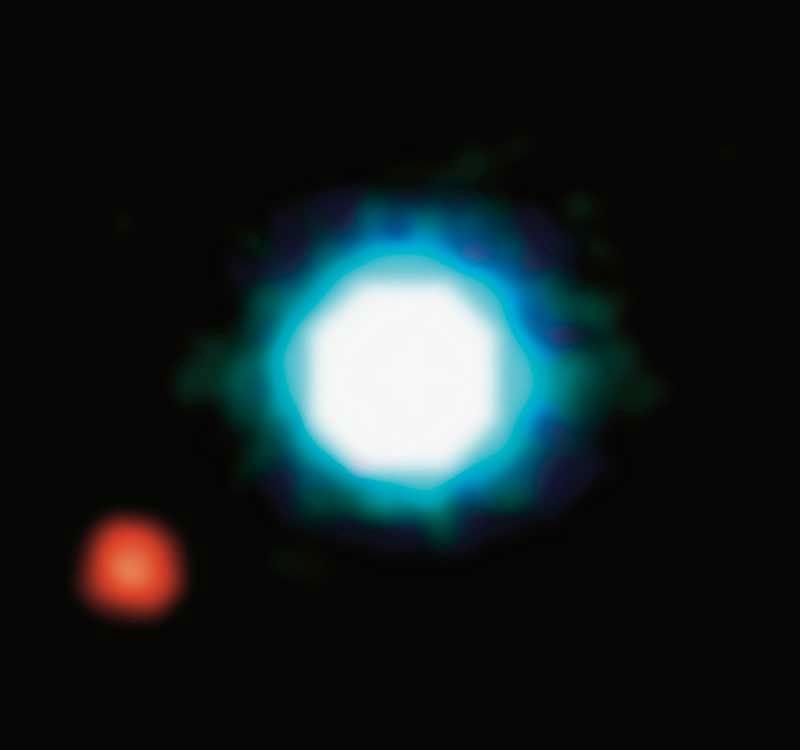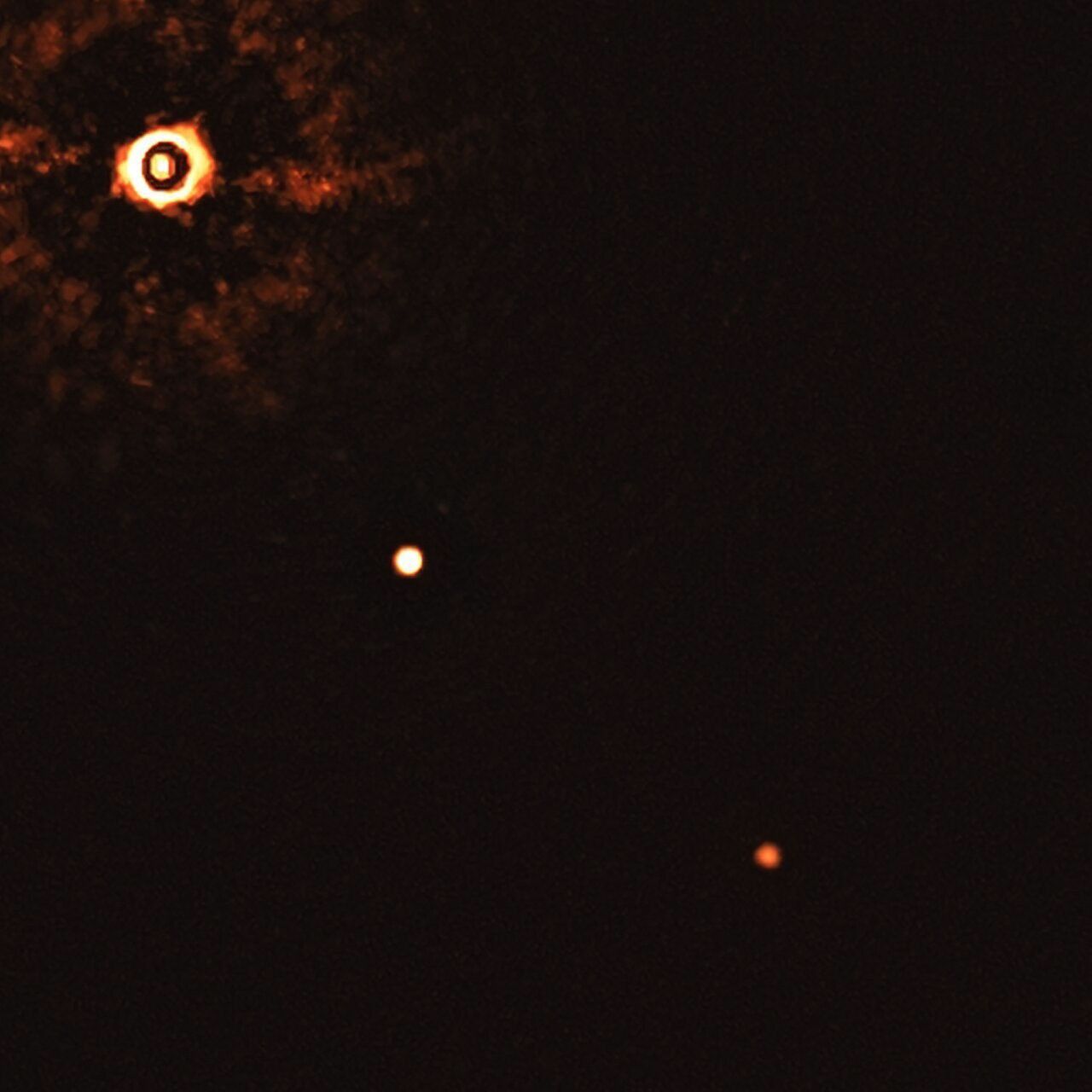Exoplanets are far away, and they are often obscured by the bright light of the stars they orbit. So, taking pictures of them the same way you'd take pictures of, say, Jupiter or Venus, isn't easy.
The major problem astronomers face in trying to directly image exoplanets is that the stars they orbit are millions of times brighter than their planets. Any light reflected off of the planet or heat radiation from the planet itself is drowned out by the massive amounts of radiation coming from its host star. It's like trying to see a firefly flitting around a spotlight.
So, it takes new techniques and advancing technology to make it happen.
Webb Telescope Gets Its First Exoplanet Image

Even the world's best space telescope, NASA's James Webb, can't capture surface features of exoplanets. It is revealing them in other ways, including obtaining the first direct measurements of exoplanet atmospheres. The first exoplanet imaged by Webb, called HIP 65426 b, is about six to 12 times the mass of Jupiter. It is young as planets go — about 15 to 20 million years old, compared to our 4.5-billion-year-old Earth.
Since HIP 65426 b is about 100 times farther from its host star than Earth is from the Sun, it is far enough from the star that Webb can easily separate the planet from the star in the image.
Webb’s Near-Infrared Camera (NIRCam) and Mid-Infrared Instrument (MIRI) are both equipped with coronagraphs, which are sets of tiny masks that block out starlight, enabling Webb to take direct images of certain exoplanets.
Two Worlds Around a Sun-like Star
These two planets – TYC 8998-760-1 b and now, c – are considered the first multi-planet system to be directly imaged around a Sun-like star. The star is a baby version of our Sun, only 17 million years old. The extreme youth of this system is a big part of why astronomers were able to capture direct images: The planets are so hot from their recent formation that they still glow brightly enough to be seen from our vantage point, even though they're hundreds of light-years away.
Planets b and c are much farther away from their star than, say, Jupiter and Saturn are from the Sun. Planet b is 160 times the Earth-Sun distance, planet c is about 320 times. Just for comparison, Jupiter is 5 times the Earth-Sun distance, Saturn 10 times.
Watching Four Planets in Orbit
Here, the black circle in the center of the image is part of the observing and analyzing effort to block the blinding light of the star, and thus make the planets visible. Four planets more massive than Jupiter can be seen orbiting the young star HR 8799 in a composite of sorts; it includes images taken over seven years at the W.M. Keck observatory in Hawaii.
The images were initially captured by Dr. Christian Marois of the National Research Council of Canada’s Herzberg Institute of Astrophysics. The movie animation was put together by Jason Wang, part of the Berkeley arm of the Nexus for Exoplanet System Science (NExSS), a NASA-sponsored group formed to encourage interdisciplinary exoplanet science.
The star, HR 8799, has continually played a pioneering role in the evolution of direct imaging of exoplanets. In 2008, the Marois group announced discovery of three of the four HR 8799 planets using direct imaging for the first time.
First Exoplanet Directly Imaged

In 2004, the first exoplanet imaged directly was 2M1207b, four times more massive than Jupiter. European Southern Observatory astronomers using the VLT (Very Large Telescope) in Chile. This composite image shows the exoplanet formally known as 2MASS J12073346-3932539 b (the red spot on the lower left), orbiting a brown dwarf 2M1207 (center). It orbits the failed star at a distance 55 times greater than the Earth to the Sun, nearly twice as far as Neptune is from the Sun. Planets that are far from their stars can be easier to directly image because they are less obscured by the light from their stars. The system 2M1207 is 170 light-years from Earth, in the constellation of Hydra. The photo is based on three near-infrared exposures (in the H, K and L wavebands).
More than 10 years later, astronomers used the Hubble Space Telescope to take a closer look. An artist's concept, below, is based on their observations.
Hubble's image stability, high resolution, and high-contrast imaging capabilities allowed astronomers to precisely measure the planet's brightness changes as it spins. The researchers attribute the brightness variation to complex clouds patterns in the planet's atmosphere. The Hubble measurements not only verify the presence of these clouds, but also show that the cloud layers are patchy and colorless.





































